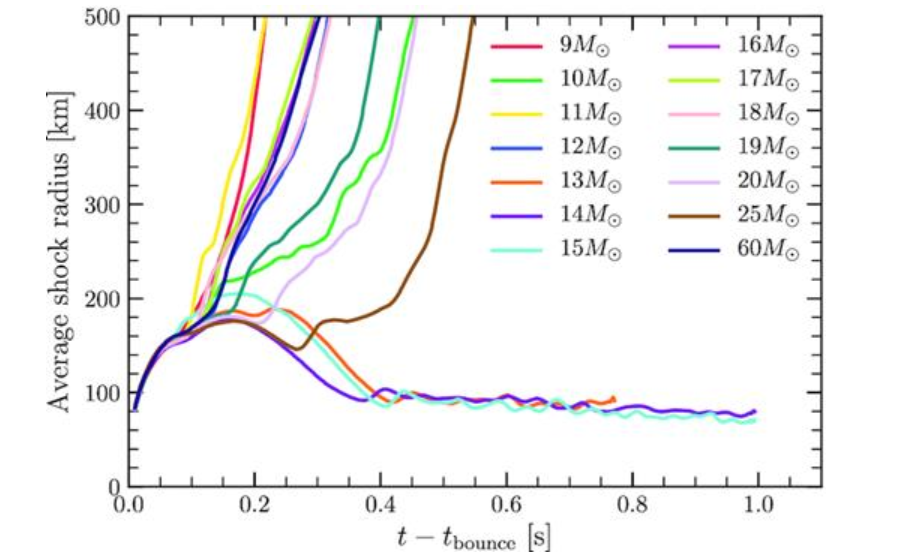How a supernova works (In brief)
on 16 April 2022
First, some background. Stars stay stable through nuclear fusion. in the core, immense heat and pressure fuses protons into deuterium, which fuses with another proton to form tritium, and two tritium atoms fuse to form helium and release 2 protons (proton-proton chain). This process releases lots of energy, which counteracts the gravity of the star, and it remains stable.
However, this hydrogen can't last forever, and when it runs out, the star starts to collapse. This increases pressure in the core, because of which helium starts fusing into carbon, and after that runs out, carbon fuses into neon, then into oxygen and so on untill iron. the core becomes multi-layer.
Normally, fussion occurs because the resulting new element is a more stable configuration and lower energy state for it's components. Iron, however, is the most stable configuration you can create. giving it more energy actually makes it lose stability. And instead of thermal pressure keeping the core intact, electron degeneracy pressure is what keeps the core intact. And, as densities get higher, degeneracy pressure weakens.
As the silicon layer burns. the core's mass continues to increase untill it reaches the chandrasekhar limit of 1.4 M☉, and when it reaches this limit, it collapses. in a tenth of a second, the roughly 5000 km diameter core shrinks to a diameter of less than 30 km. This one action produces as much energy as 80 suns will in their entire lifetime.
The increase of density from this forces electrons to merge with protons in neutronization to form a neutron and a neutrino. This also aleviates the electron degeneracy pressure which makes the core collapse faster. As the temperature reaches 10 billion kelvin, the gamma rays produced are powerful enough to shred through iron nuclei, which reduces the stability of the core, which also makes it collapse faster. the density of the core overshoots the density of an atomic nuclei, because of which the strong force pushes them back, and the core bounces back to about 50 km in diameter, which creates a shockwave, which stalls after about 300 ms.
Meanwhile, during the collapse neutrinos are produced in immense quantities with greater and greater energy (Direct urca process), and the core becomes opaque to them, which causes the core to reach 100-500 billion kelvin. as the shockwave remains motionless at 200km from the core, the infalling material accretes on the core forming the gain radius, and the area between the gain radius and the shockwave is called the gain region where neutrinos can diffuse out from the core. the density and pressure of the shockwave creates additional oppacity for neutrinos called the neutrinosphere. The reason the shockwave stalls is photodisentigrating iron nuclei and the physical ram pressure of all the matter. in smaller stars, this isn't as big of a problem, but in larger stars it poses more of an issue.

both photodisentigrating nuclei and ram pressure decreases as density decreases. thus, as long as the gain region
can sustain the shockwave, the amount of matter and desnity above decreases while the amount of neutrino heating below
it, increases. eventually the pressure from neutrino heating overcomes the ram pressure and the shockwave restarts.
Back to Home page